Your cart is currently empty!
Month: August 2014
-
Little Helpers

I have plenty of little helpers eager to lend their feet as I clear land for new fencing. These five week old chicks are very curious as to what I am doing. They’ve made the connection that my clearing land means plenty of bugs and earthworms to eat. Their mother is ever vigilant. A mother hen invests so much time and energy raising chicks, I wonder what they feel when their brood is finally raised and on their own. Do they feel a sense of accomplishment?
Two days ago when I heard an eagle cry, I went into the field where I knew she was, to make sure she was safe. I found her but none of her chicks. She had told them to spread out and hide in the grass. They were so well hidden, I almost stepped on one. While they hid, I chased the eagle off. Once it had flown away, I went back to check on the mother and her chicks. One by one the chicks popped out of the grass they were hiding under, and I herded the mother and chicks out of the field.
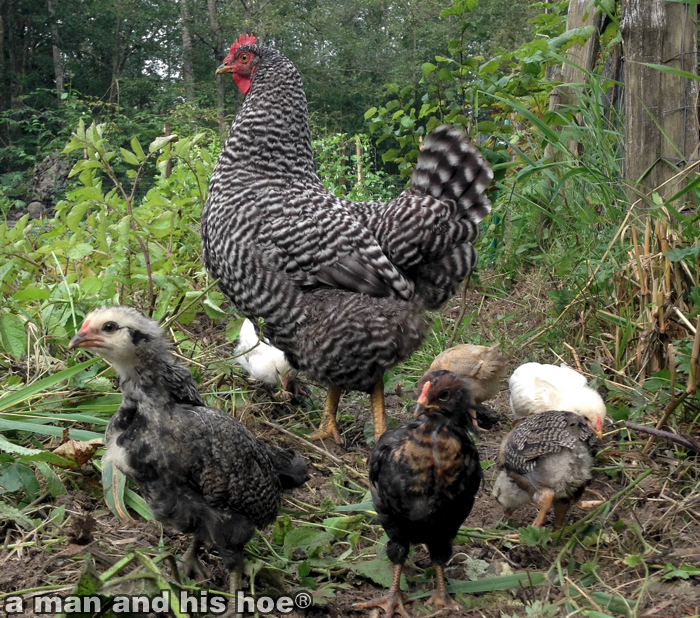
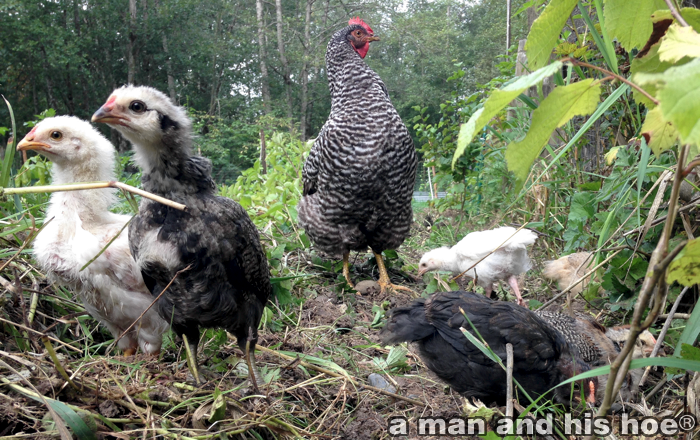

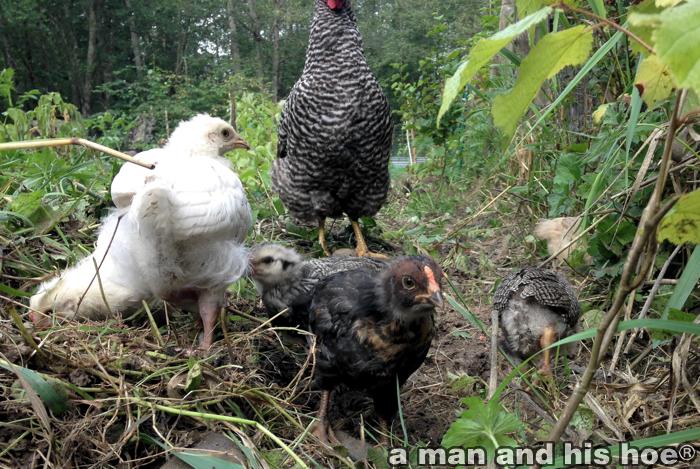
Chickens have tiny brains. There is no denying that. But they aren’t small robots with no feelings. They feel joy, exhilaration, angst, fear, rage, jealousy, a rich spectrum of emotions. They deserve to be treated with great respect and love.
-
Softening the Edges

Ever notice when you cut raw potatoes how sharp the edges are? If you’re cooking for someone you love, take a minute or two to do something about those edges. Do you really want to serve them sharp-edged potatoes? Before cooking them, it’s easy to soften the edges with a peeler. Just run the peeler over the cut edges. With the edges softened, the potatoes will be easier to eat once they are cooked.
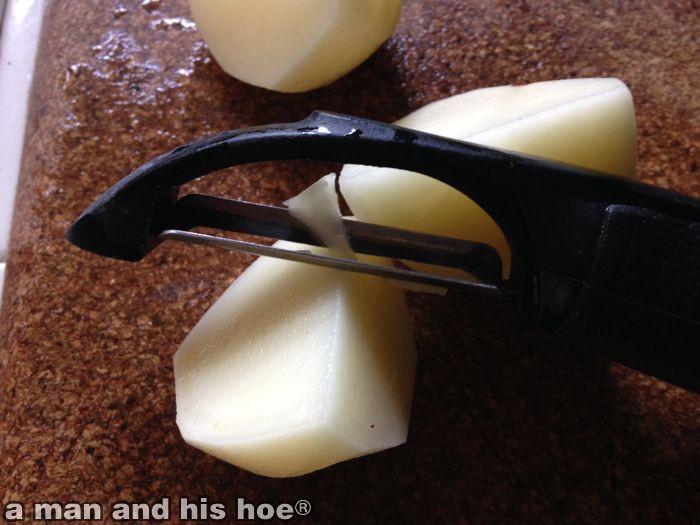
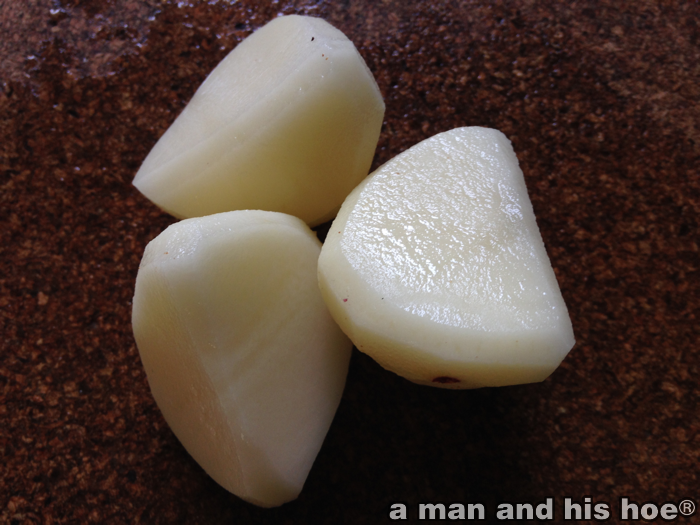
With their edges softened, the potato pieces will look more appetizing in dishes like potato salad, curry rice, and niku-jyaga 肉じゃが.

What to do with trimmed off edges? Toss them in a salad, put them in soup, mince them and use them to thicken stews, or let the chickens have them along with the other scraps you have for them. They’ll turn them into wonderful eggs.

-
Animal Love

These are Woody (the white cat, 15 years old) and Rusty (the orange cat, 9 years old). Nine summers ago, Woody lost his sister, Winnie. She died suddenly from cardiomyopathy. He was so depressed afterwards that it was clear he needed another cat to be with. We brought little Rusty home from The N.O.A.H. Center for him. Rusty was a feral kitten who was rescued by the center. It took just a few days for Woody and Rusty to become best of friends. Below are some pictures from 2005 soon after we brought Rusty home.


Love and companionship is a basic need of many animals, not just people. It’s impossible to farm without love. It’s like a fundamental nutrient which plants and animals won’t thrive without.
-
Out of the Garden Today – August 21, 2014
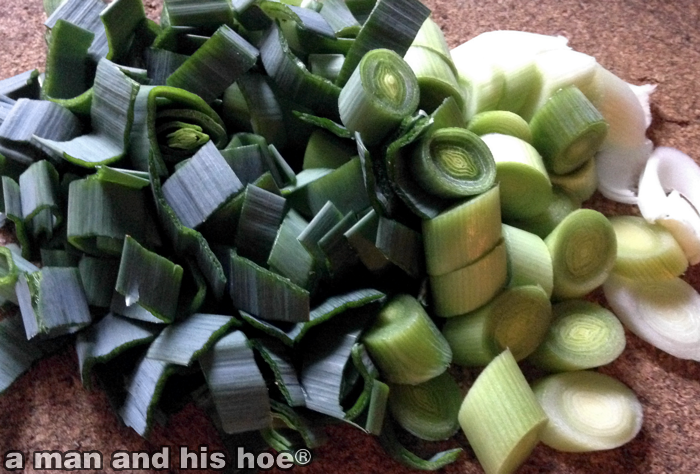
The smell of a leek, pulled out of the ground just a few minutes before chopping, is intense. And since I have the whole leek to work with, not just the parts the grocer thought I should have, I can play with the long leaves. Draped over the kitchen sink, they look like the tentacles of a sea creature crawling out of the deep, in search of prey.
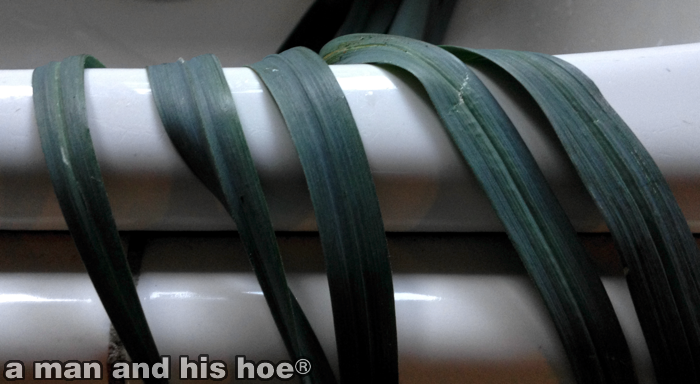
-
Is She or Isn’t She?
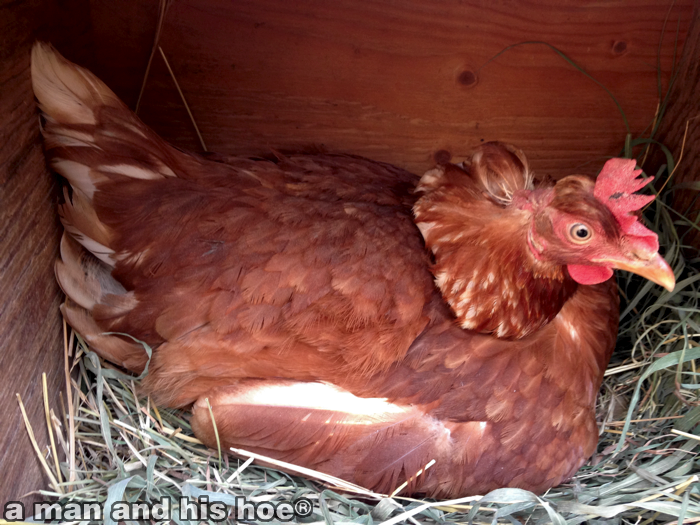
The last few days, Lucky has acted like she is going broody. She was sitting on her nest all afternoon so there is a good chance she is ready to to incubate eggs. Lucky is a special hen. When she was a chick, she suffered an injury on the back of her head and had to be kept away from her siblings and mother. She beeped and beeped and beeped for them. To this day, she has a bald spot on the back of her head which gives her a distinctive look.
If she has gone broody, she’ll be able to have that wonderful, warm family experience she missed as a child. She has a very outgoing personality and is one of the first hens to come running when I dig in the gardens.